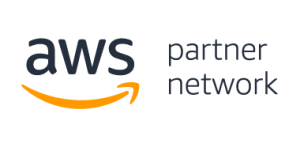Overview
Use the Web Disk interface to manage and manipulate files on your server on multiple types of devices (for example, your computer or mobile device). This interface allows you to easily complete file management tasks that use the Web Distributed Authoring and Versioning (WebDAV) protocol.
Main Web Disk Account
By default, the system creates a Web Disk account for your cPanel account and sets your home directory as the Web Disk location. This account uses the same login information as your cPanel account and can access all of the files in your home directory. You cannot delete this Web Disk account.
- To access this account’s files, click Access Web Disk.
- To view login details for the Web Disk account or download a configuration script, click Configure Client Access.
- If you use Microsoft Windows Vista®, Windows® 7, Windows® 8, or Windows® 10, click Enable Digest Authentication to enable Digest Authentication, or click Disable Digest Authentication to disable it. For more information, read the Web Disk and Digest Authentication section below.
- For more information about how to connect third-party software with your Web Disk account, read our Connect to Web Disk with Third-Party Software documentation.
Create an Additional Web Disk Account
To create an additional Web Disk account, perform the following steps:
- Enter the desired account information in the available text boxes.
- When you enter a username, you can select a domain or subdomain from the menu if your account includes more than one domain or subdomain.
- Enter and confirm the new password in the appropriate text boxes. The system evaluates the password that you enter on a scale of 100 points. 0 indicates a weak password, while 100 indicates a very secure password. You can also click Password Generator to generate a strong password. For more information, read our Password & Security documentation.
3. Enter the Web Disk account’s home directory in the Directory text box:
- The house icon (
 ) represents the cPanel account’s home directory.
) represents the cPanel account’s home directory. - The Directory text box defines the new Web Disk account’s top level of directory access, relative to the cPanel account’s home directory.
- The system automatically populates this text box with
public_html/username, whereusernamerepresents what you entered in the Username text box.
- The house icon (
4. Select a Permissions setting:
- Read-Write — This setting grants this account access to all of the operations inside the directory.
- Read-Only — This setting only grants this account access to read, download, and list the files inside the directory.
5. If you use Microsoft Windows Vista®, Windows® 7, Windows® 8, or Windows® 10, select the Enable Digest Authentication checkbox.
6. Click Create. A new interface will appear.
- To return to the main interface, click Go Back.
- To navigate to setup instructions for your new Web Disk account, click Access Web Disk.
Manage Additional Web Disk Accounts
The Manage Additional Web Disk Accounts table displays the following information for all of the additional Web Disk accounts that you create:
- Account — The Web Disk account username.
- Directory — The Web Disk account’s assigned directory and related actions.
- Click the directory name to open the assigned directory in cPanel’s File Manager interface (cPanel >> Home >> Files >> File Manager).
- Click the edit icon (
 ) to change the account’s assigned directory.
) to change the account’s assigned directory. - Click the lock icon (
 ) to use cPanel’s Directory Privacy interface (cPanel >> Home >> Files >> Directory Privacy) to password protect the directory, create a user to access the directory, or remove a user from the directory.
) to use cPanel’s Directory Privacy interface (cPanel >> Home >> Files >> Directory Privacy) to password protect the directory, create a user to access the directory, or remove a user from the directory.
- Click Configure Client Access to view login details for the Web Disk account.
- For certain devices, you can also click Download Configuration Script to download a device configuration script. For more information, read our Connect to Web Disk with Third-Party Software documentation.
- Click Enable Digest Authentication and follow the prompts to enable Digest Authentication. For more information, read the Web Disk and Digest Authentication section below.
- Click Change Password to change the Web Disk account password.
- Click Delete and follow the prompts to delete the Web Disk account.
- Click a permissions setting to change the account’s permissions:
- Set Read-Write — This setting grants this account access to all of the operations inside the directory.
- Set Read-Only — This setting only grants this account access to read, download, and list the files inside the directory.
Web Disk and Digest Authentication
Lorem ipsum dolor sit amet, consectetur adipiscing elit. Ut elit tellus, luctus nec ullamcorper mattis, pulvinar dapibus leo.
You must enable Digest Authentication if you use Windows® Vista, Windows® 7, or Windows® 8, or Windows® 10 and you access Web Disk over a clear text, unencrypted connection. You do not need to enable Digest Authentication if you meet the following conditions:
- The domain has an SSL certificate that a recognized certificate authority signed.
- You can connect to Web Disk with SSL over port
2078. - If you use Windows XP®, Windows Vista, or Windows® 2003, you may experience errors when you attempt to connect to your Web Disk account. These operating systems require a patch that Microsoft no longer offers, and it no longer supports these operating systems.
- If you use Windows 7, a discrepancy may exist between the amount of disk space that the system reports and the actual available disk space. This happens because the WebDAV protocol, which Web Disk uses, cannot query a server’s disk capacity. For more information, read Microsoft Support’s article about this problem.




